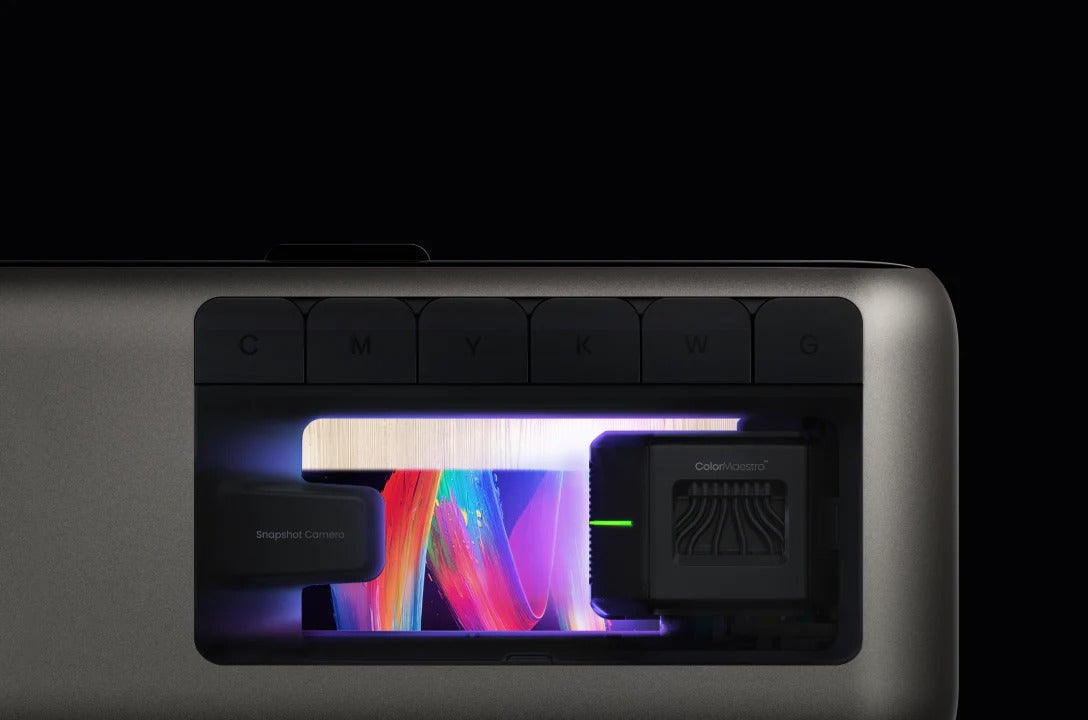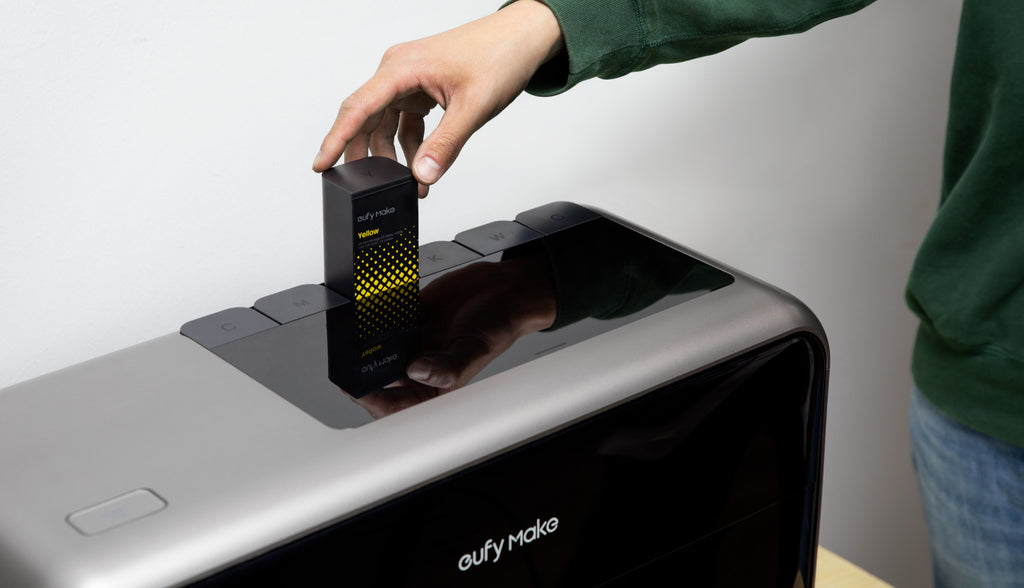Decals and stickers-people often use these terms like they mean the same thing, but they're not.
A sticker is usually a single-piece graphic. When you apply it, the design and background stay together.
A decal, on the other hand, is made so that only the design sticks to the surface. No background is left behind.
That's just scratching the surface. There's a lot more to how decals and stickers differ.
In this guide, you'll know how to choose between decals and stickers, get better results, and make sure your design lasts.

Image: Done By Alex
The Key Differences Between Decals and Stickers
While all decals are technically a type of sticker, not every sticker can be classified as a decal.
The differences between decals and stickers come down to how they're made, how they're applied, and how they look once in place. Let's break it down.
Construction and Materials
One of the main differences between decals and stickers is how they're made.
Stickers are simple. They have one layer. The design is printed right onto adhesive paper or vinyl with a peel-off backing. What you see is what you get.
Decals are more complex. A typical decal has three layers: a transfer film, a printed graphic, and a backing paper. These stack like a sandwich. The graphic sits between the backing and the transfer film, sometimes with a protective top layer added.
Application Process
The way you apply them shows another big difference between stickers and decals.
With stickers, you just peel and stick. The whole piece, background included, goes onto the surface.
Decals need a bit more care. First, you remove the backing. Then you place the graphic on your surface. After that, you peel away the top layer. What's left is just the design-no background.

Image: Cottonbro Studio
Appearance
Stickers always show their entire backing as part of the final look. This means you'll always see a border or edge surrounding your design. Sometimes this works great, but other times it looks amateur.
Decals create that smooth, seamless appearance professionals prefer. Since only the design transfers to your surface with no visible background, a well-applied decal looks like it was painted or printed directly onto the item.
These aesthetic differences are one of the main reasons businesses choose decals for their storefronts and vehicles.
Materials and Environmental Durability
The materials used for decals and stickers can also affect how long they last.
Stickers usually come in paper or vinyl. Paper stickers are best for indoor, short-term use. Vinyl stickers last longer, especially indoors, but even they are not ideal for rough outdoor conditions.
Decals are made for more demanding environments. They use tougher materials that resist moisture, UV light, and temperature changes. A good decal can last three to seven years outdoors if applied correctly.
In contrast, paper stickers may fade in just weeks under sun or rain. Even vinyl stickers might only last a year or two unless they're kept on a smooth, protected surface.

Image: Nolan Kent
Another Option: UV DTF Decals
Here's something new worth knowing.
Decals used to be harder for small businesses and hobbyists to make. But thanks to UV DTF printing, that's changed.
UV DTF decals can now be created using a compact desktop UV printer like eufyMake E1. The design is printed on UV DTF type A film, then laminated with type B film using a laminating machine.
The process results in decals that look professional and share similar costs to stickers. However, UV DTF decals need no weeding, are tougher, and are more customisable.
When Should You Use Stickers? Perfect for These 5 Situations
Making the correct choice of either stickers or decals for the job is integral to getting the results you want.
That's why we've listed a few practical application use cases for both stickers and decals below.
- Branding or retail packaging: Stickers can be used to brand generic packaging for retail distribution. They can also be used to indicate special features, sales, promotions, or one-of-a-kind deals.
- Personalizing tech gear: Stickers are often perfect for adding a personal touch to tech gear like water bottles, laptops, electronics cases, toolboxes, etc.
- Running limited-time promotions: Slap stickers on current products to indicate time-sensitive deals. Test different promotions using different stickers without changing general product packaging.
- Decorating notebooks or journals: Add a sticker of your alma mater, your favorite sports team, your niche hobby, or just about anything else to make your notebooks unique.
- Labeling organizational systems: Stickers are the perfect method of labeling organizational systems as their peel and stick nature lets you label items rapidly.
Overall, you'll want to choose stickers when you need affordability and a quick turnaround. They should be your go-to for marketing materials or temporary displays. They're cheaper to produce, especially in bulk.
You can also apply them without special tools, and they provide customization options like glossy finishes, die-cuts, or holographic effects. They're also lightweight and easy to ship.
When Are Decals the Better Choice? 5 Times to Choose Decals Instead
Looking for something more professional than a sticker? Here's when decals shine:
- Vehicle graphics and fleet branding: Decals withstand road conditions, car washes, and weather while maintaining a professional appearance.
- Shop window signage: UK businesses prefer decals for their storefront windows because they create a painted-on look without visible borders.
- Safety labels on equipment: When you need warnings or instructions to last for years, decals offer the durability required.
- Wall graphics and murals: Decals create beautiful wall art that looks professionally installed without the painterly background of stickers.
- Floor markings in high-traffic areas: For directional signs or safety markings that people walk on daily, decals offer superior durability.
Opt for decals when you need both professional levels of messaging and long-term durability. They deliver polished results for businesses and serious DIYers.
Additionally, decals are workhorses that handle curves and rough textures better than stickers. Their multi-layer construction allows intricate designs and ultra-crisp edges.
With decals, you'll get professional-grade durability without sacrificing visual impact. And properly applied decals become permanent fixtures.
What to Watch Out for with Decals and Stickers
For stickers, paper variants tear easily and can't handle moisture. And vinyl stickers struggle with curved or textured surfaces. Once applied, repositioning stickers often damages the adhesive or tears the background. Some stickers aren't biodegradable, which raises slight environmental concerns.
The higher costs associated with decals could strain tighter budgets. As well, applying decals requires patience and practice. If you botch the installation, you'll waste expensive materials.
Finally, more complex decal designs need "weeding" to remove excess vinyl, which can be beyond a beginners' skill level.
Still Not Sure? Ask Yourself These Questions
Based on the information we've provided here, it should be much easier to decide whether stickers or decals are the best fit for your project.
However, if you're still a bit unclear as to the right choice, then these questions can help you finalize that decision. They are:
- How long do I need this graphic to last?
- Will this graphic be exposed to outdoor weather or other types of physical wear?
- What sort of surface do I play to apply this graphic to?
- What's my budget?
- What sort of result am I expecting?
- Am I comfortable performing technical application, and/or will hiring a professional installer compromise the project in some way?
It's often a safe bet to match stickers to temporary, low-stakes projects, and reserve decals for professional, long-term applications where durability trumps convenience.
Also, don't forget: in the UK's damp climate, make sure your surface is totally dry before applying either one. And for decals, using a squeegee tool helps get that pro-level finish.


